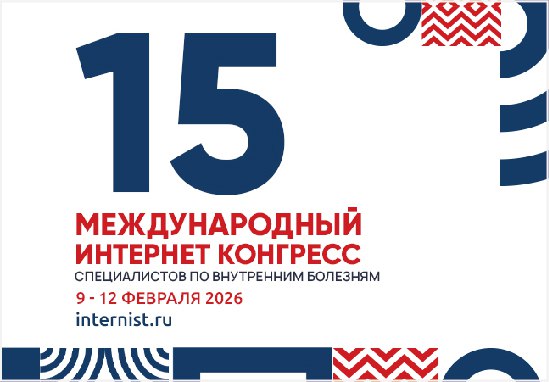Biliary hypertension syndrome in the practice of a gastroenterologist. A case report
https://doi.org/10.15829/3034-4123-2025-51
EDN: BLLTCA
Abstract
Introduction. Major duodenal papilla (MDP) adenomas are rare, up to 0.2-1.0% of all tumors of the gastrointestinal tract. Their diagnosis is often difficult, which is clearly reflected in the presented case.
Brief description. A 46-year-old patient fell ill acutely in September 2024 with a picture of acute respiratory disease. After two courses of antibacterial therapy, jaundice, skin itching, cytolysis and cholestasis syndromes appeared. The patient was observed with a diagnosis of drug-induced hepatitis with a moderate positive effect from hepatotropic therapy. In December 2024, symptoms relapsed, and the patient was hospitalized in one of the city hospitals, where viral, autoimmune liver diseases, liver vascular thrombosis, and cardiovascular pathology were ruled out. According to the abdominal ultrasound, pancreatic hypertension was detected. When Contrast-enhanced abdominal computed tomography revealed biliary hypertension with suspected choledocholithiasis, stenosis of the common bile duct terminal part, which were subsequently not confirmed by magnetic resonance imaging. Major duodenal papilla adenoma was suspected and confirmed by histological examination during repeated gastroscopy, 5 months after the disease onset.
Discussion. The presented case demonstrates the pathological process at all stages, the results of numerous diagnostic studies used to verify the diagnosis, a list of nosological units and a discussion of their probability in the context of differential diagnostics.
About the Authors
M. F. OsipenkoNovosibirsk
Yu. V. Makarova
Russian Federation
Novosibirsk
L. Yu. Pankova
Russian Federation
Novosibirsk
References
1. Starkov YuG, Dzhantukhanova SV, Zamolodchikov RD, Vagapov AI. Endoscopic classification neoplasms of the major duodenal papilla. Oncology bulletin of the Volga region. 2022;13(4):25-30. (In Russ.)
2. Zatevakhin II, Kiriyenko AI, Sazhin AV. Emergency abdominal surgery: Methodological guide for a practicing physician. Moscow: OOO "Medical Information Agency", 2018. р. 488. (In Russ.)
3. Wertz JR, Lopez JM, Olson D, et al. Comparing the Diagnostic Accuracy of Ultrasound and CT in Evaluating Acute Cholecystitis. AJR Am J Roentgenol. 2018; 211(2):92-7. doi:10.2214/AJR.17.18884.
4. Bonomo RA, Edwards MS, Abrahamian FM, et al. 2024 Clinical Practice Guideline Update by the Infectious Diseases Society of America on Complicated Intraabdominal Infections: Diagnostic Imaging of Suspected Acute Cholecystitis and Acute Cholangitis in Adults, Children, and Pregnant People. Clin Infect Dis. 2024;79(Suppl 3):S104-8. doi:10.1093/cid/ciae349.
5. Tazuma S, Unno M, Igarashi Y, et al. Evidence-based clinical practice guidelines for cholelithiasis 2016. J Gastroenterol. 2017;523:276-300. doi:10.1007/s00535-016-1289-7.
6. Manes G, Paspatis G, Aabakken L, et al. Endoscopic management of common bile duct stones: European Society of Gastrointestinal Endoscopy (ESGE) guideline. Endoscopy. 2019;51(5):472-91. doi:10.1055/a-0862-0346.
7. Skazyvaeva EV, Bakulin IG, Sitkin SI, et al. Autoimmune liver diseases: etiopathogenesis, diagnosis and treatment. M.: Prima Print, 2024. p. 172. (In Russ.)
8. Sebode M, Weiler-Normann C, Liwinski T, et al. Autoantibodies in Autoimmune Liver Disease-Clinical and Diagnostic Relevance. Front Immunol. 2018;27(9):609. doi:10.3389/fimmu.2018.00609.
9. Alperovich BI, Brazhnikova NA, Tskhai VF, et al. Surgical aspects of complicated and concomitant chronic opisthorchiasis. Federal Agency for Health and Social Development, Siberian State Medical University. Tomsk: TML-Press, 2010. p. 358. (In Russ.)
10. Ilkanich AJ, Darvin VV, Klimova NV, et al. Algorithm for diagnostics and treatment of patients with chronic opisthorchiasis complicated by mechanical jaundice. Bulletin of Experimental and Clinical Surgery. 2016;(1):24-32. (In Russ.)
11. Brazhnikova NA, Tskhay VF. Strictures of biliary tracts during opisthorchosis. Bulletin of Siberian Medicine. 2003;2(4):58-66. (In Russ.)
12. Yurichev IN, Timofeev ME, Malikhova OA, Savosin RS. Possibilities of oral transpapillary cholangioscopy in oncological practice. Modern oncology. 2020;22(1):40-5. (In Russ.)
13. de Oliveira PVAG, de Moura DTH, Ribeiro IB, et al. Efficacy of digital single69 70operator cholangioscopy in the visual interpretation of indeterminate biliary strictures: A systematic review and meta-analysis. Surg Endosc. 2020;34:3321-9. doi:10.1007/s00464-020-07583-8.228.
14. Facciorusso A, Gkolfakis P, Ramai D, et al. Endoscopic Treatment of Large Bile Duct Stones: A Systematic Review and Network Meta-Analysis. Clin Gastroenterol Hepatol. 2023;21:33-44. doi:10.1016/j.cgh.2021.10.013.
15. Tarasenko SV, Natalsky AA, Rakhmaev TS, et al. Surgical treatment of adenoma of the major duodenal papilla: a clinical case. Surgical practice. 2016;4:57-9. (In Russ.)
- Biliary hypertension syndrome requires high clinical alertness, as it can be a manifestation of numerous digestive system diseases.
- A case of a 46-year-old patient is presented, in whom biliary hypertension syndrome arose as a result of a rare pathology — major duodenal papilla adenoma.
- The complexity of verification of major duodenal papilla adenoma is demonstrated, despite the use of highly informative diagnostic methods.
Review
For citations:
Osipenko MF, Makarova YV, Pankova LY. Biliary hypertension syndrome in the practice of a gastroenterologist. A case report. Primary Health Care (Russian Federation). 2025;2(2):73-78. (In Russ.) https://doi.org/10.15829/3034-4123-2025-51. EDN: BLLTCA






















